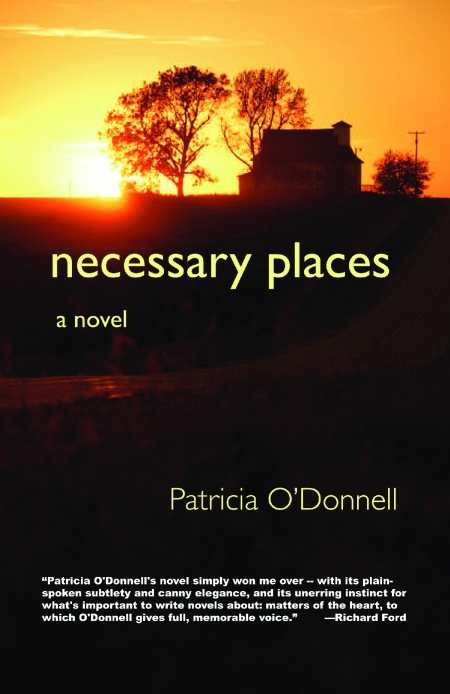Necessary Places
No woman is ever ready to care for a sick parent or to watch her daughter grow up and live on her own. But in Necessary Places, Anna Donoghue has to confront both inevitable realities at once.
After enduring a quiet but emotionally tumultuous childhood in Vicksburg, Iowa, Anna fled home, first to Chicago, where she joined a sexually experimental theater organization; when this lifestyle began to deter young Anna, she resumed college studies, eventually becoming an art teacher, marrying a man named David, and settling in Maine.
Necessary Places opens with thorough descriptions of how Parkinson’s is stealing the independence of her father, Tim. Their relationship is strained by the fact that his wife and Anna’s mother, Josephine, left them during Anna’s teen years to live in New York City. She died there in a biking accident before she had the chance to say goodbye—the daughter had no contact with her mother between her departure and her death.
Anna has both the strength and the anger of a girl who lost her mother at a young age—she also has the dreamy longing of what could have been. As she stares into the clouds looking for answers in their shapes, her character as a visual artist and a hopeful child collide.
Tim, who notices his own aging, convinces Anna to drive him to Iowa to see his brother, Gil, one last time. The two feeble men have been apart for twenty years, and just as Tim is reluctant to face the past, Anna is hesitant to return to the place that reminds her of loss and loneliness.
The two travel to the Midwest and meet with Gil. Anna also reunites with her old friend Maggie, who, despite a marriage and three boys, hasn’t changed much since her wild youth. Over cigarettes and scotch, Anna gains Maggie’s insights into her mother’s disappearance. Cryptic comments from Gil about his ex-wife, Darlene, who left him shortly after Josephine fled, lead Anna closer to solving questions long unanswered.
A visit to Tim and Anna’s old house helps to unearth secrets about Josephine that Tim had hidden for almost thirty years—changing the way Anna perceives her entire life history. Meanwhile, on the East Coast, David has hunted down their missing nineteen-year-old daughter, Chloe, who insists she wants to pursue religious service in India. Anna is saddened by this new loss, but all she has found in Iowa comforts her. Anna is a resilient model for all women battling personal or familial struggles of any kind.
A parallel among the women in O’Donnell’s novel is the desire to escape one’s family and home to chase individual, often spiritual, dreams. The theme of solitude prevails in this book; even when Anna’s father is by her side, she is often alone with her thoughts. Anna’s narration of her own emotional growth throughout the story is detailed and revelatory; it’s a message about the anchoring presence of home and one’s reasons for running away from it. “Being alone,” Anna says, “is sometimes a painful and difficult thing to do, but it can take one to necessary places.”
Reviewed by
Lydia Belanger
Disclosure: This article is not an endorsement, but a review. The publisher of this book provided free copies of the book to have their book reviewed by a professional reviewer. No fee was paid by the publisher for this review. Foreword Reviews only recommends books that we love. Foreword Magazine, Inc. is disclosing this in accordance with the Federal Trade Commission’s 16 CFR, Part 255.

